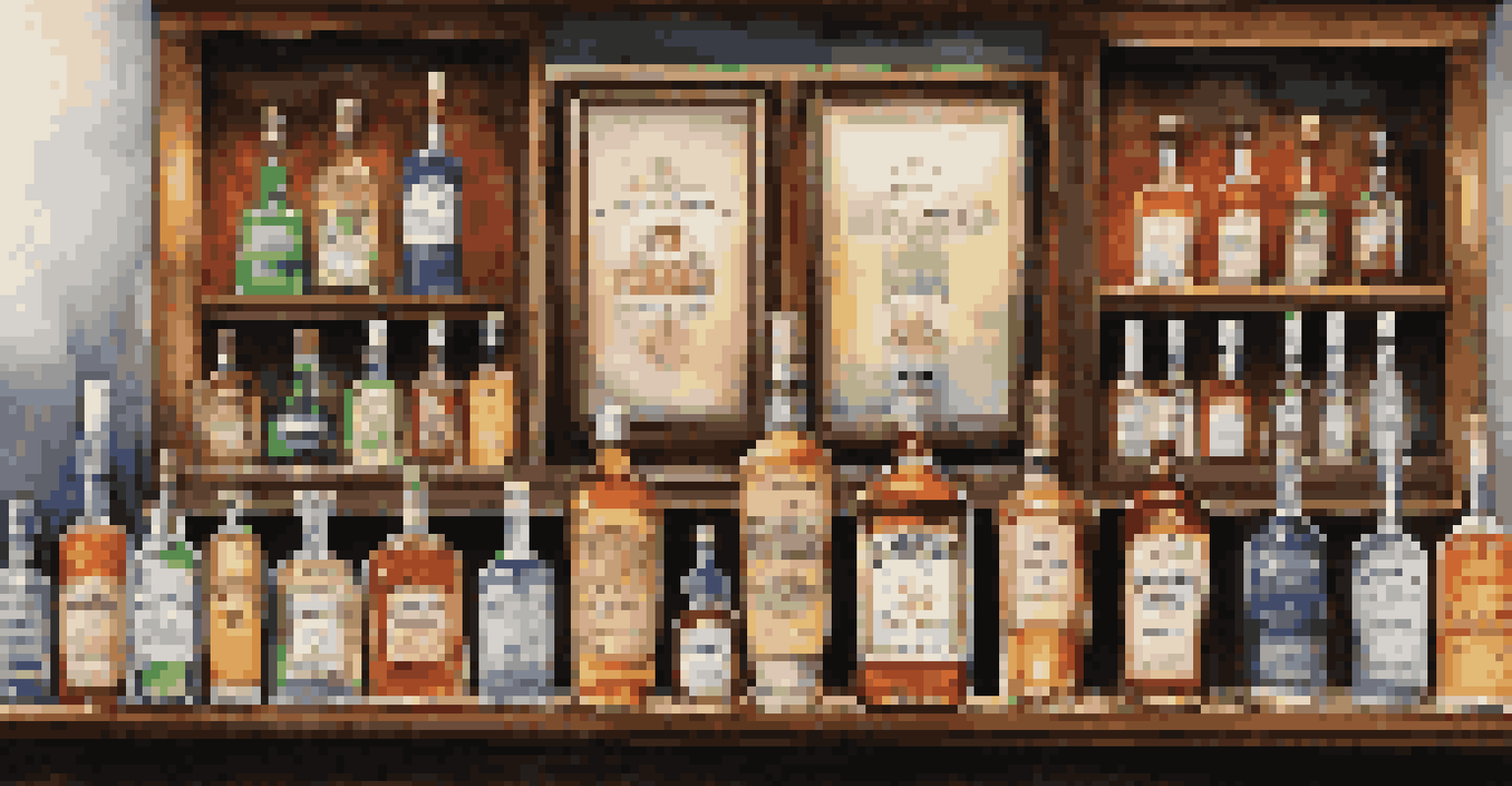The Importance of Testing Alcohol Content in Homemade Spirits

Understanding Alcohol Content: What It Means
Alcohol content, often measured in alcohol by volume (ABV), indicates the percentage of alcohol in a beverage. For homemade spirits, knowing this percentage is vital for both safety and enjoyment. Too high an ABV can lead to overly strong drinks, while too low may not deliver the intended flavor profile.
Beer is proof that God loves us and wants us to be happy.
For instance, if you’re crafting a homemade whiskey, you want to ensure it has that perfect kick without being overwhelming. This balance is what makes or breaks a good spirit. Understanding alcohol content also helps you follow legal guidelines if you choose to share or sell your creations.
Ultimately, knowing your alcohol content allows you to control the quality and consistency of your spirits, making the entire process more rewarding and enjoyable.
Why Testing Is Essential for Safety
Testing the alcohol content in homemade spirits is crucial for safety reasons. Consuming spirits with unexpectedly high alcohol levels can lead to alcohol poisoning, which is a serious health risk. This is especially important when sharing your creations with friends and family.

Imagine hosting a gathering where your homemade cocktails are the highlight. If someone has a low tolerance for alcohol, they could easily be caught off guard by a stronger-than-expected drink. Testing your spirits ensures that everyone can enjoy responsibly without any surprises.
Importance of Alcohol Testing
Testing alcohol content is essential for ensuring safety and responsible consumption in homemade spirits.
Moreover, understanding the effects of alcohol on your body empowers you to engage in healthier drinking habits, allowing for a more enjoyable experience overall.
Enhancing Flavor Profiles Through Testing
The alcohol content can significantly influence the flavor profile of your spirits. Different levels of ABV can bring out or suppress certain flavors, leading to a unique tasting experience. By testing your alcohol content, you can adjust your recipes to achieve the desired taste.
Good spirits are a good company.
For example, a higher ABV can accentuate the rich, warm notes of a spiced rum, while a lower ABV might highlight the subtler flavors of botanicals in gin. Knowing how to manipulate these levels allows you to experiment and refine your recipes.
This not only improves your skills as a home distiller but also provides an opportunity to impress your guests with well-balanced and flavorful drinks.
Legal Considerations in Homemade Spirits
Homemade spirits often come with legal considerations that vary by region. Many places have regulations on the production and distribution of alcohol, including restrictions on ABV levels. Testing your spirits can help you stay compliant with these laws.
For instance, if you’re planning to sell your homemade spirits, understanding the legal limits for alcohol content in commercial products is essential. Testing ensures that your creations meet these requirements, avoiding any potential legal issues.
Flavor Impact of ABV Levels
Alcohol by volume (ABV) significantly influences the flavor profile of spirits, allowing for tailored tasting experiences.
By being proactive about testing, you not only protect yourself but also contribute to a responsible home distilling community.
Choosing the Right Equipment for Testing
When it comes to testing alcohol content, having the right tools is key. Hydrometers and refractometers are two popular instruments that can help you measure ABV accurately. Each has its own method, but both can provide reliable results when used correctly.
A hydrometer, for example, measures the specific gravity of your liquid before and after fermentation, allowing you to calculate the alcohol content. On the other hand, a refractometer uses light refraction to estimate sugar content, which can also indicate alcohol levels.
Investing in quality testing equipment not only simplifies the process but also ensures the accuracy of your measurements, leading to better homemade spirits.
Common Mistakes When Testing Alcohol Content
Even seasoned distillers can make mistakes when testing alcohol content. One common error is failing to calibrate equipment properly, which can lead to inaccurate readings. It's crucial to follow the manufacturer's instructions and ensure your tools are in good working condition.
Another mistake is not accounting for temperature variations when measuring alcohol content. Since temperature can affect the density of liquids, this oversight can skew your results. Always aim to test at the recommended temperature for the best accuracy.
Legal Compliance in Distilling
Understanding and testing alcohol content helps ensure compliance with local laws regarding homemade spirits.
By being aware of these pitfalls, you can enhance the reliability of your testing process and ensure the quality of your spirits.
The Joy of Sharing: Responsible Distilling Practices
At the heart of homemade spirits is the joy of sharing your creations with others. However, responsible distilling practices, including testing alcohol content, ensure that your guests have a safe and enjoyable experience. Sharing should always come with an understanding of what’s in the bottle.
When you serve your homemade spirits, informing your guests about the alcohol content not only promotes responsible drinking but also fosters an appreciation for your craft. It’s a great conversation starter and can elevate the entire tasting experience.

Ultimately, by embracing responsible practices, you not only protect your loved ones but also enhance the community aspect of home distilling, making it a shared celebration of creativity and craftsmanship.